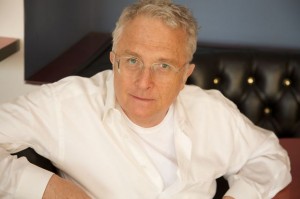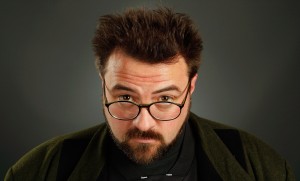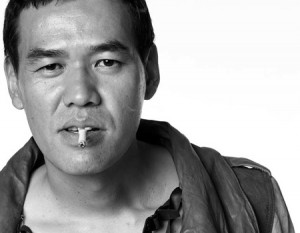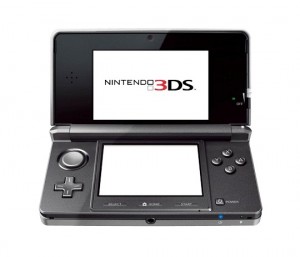NYT Column: Take Back the Trash by JET alum Bruce Feiler
“Take Back the Trash“ is a thoughtful column on whether to throw out food in your refrigerator by JET alum Bruce Feiler, author of Learning to Bow, Walking the Bible and several other best-sellers including his recent book The Council of Dads:
http://www.nytimes.com/2011/03/06/fashion/06ThisLife.html?pagewanted=1&_r=2
Justin’s Japan (or America): Oscar Winner + Film Director Q&As
JetWit is proud to announce that JQ magazine’s Justin Tedaldi (CIR Kobe-shi, 2001-02) is now the official Music Q&A and Perfoming Arts Q&A reporter for Examiner.com‘s national page! Kicking off his new channels are exclusive interviews with Academy Award-winning songwriter Randy Newman and filmmaker Kevin Smith.
Visit Justin’s site here to subscribe for free alerts on newly published stories.
Justin’s Japan: Q&A with Billy Sheehan of Mr. Big
By JQ magazine’s Justin Tedaldi (CIR Kobe-shi, 2001-02) for Examiner.com. Visit his page here to subscribe for free alerts on newly published stories.
Considered by many to be the Eddie Van Halen of bass, Billy Sheehan launched his recording career in the late ’70s with the Buffalo-based rock trio Talas, then joined original Van Halen frontman David Lee Roth’s band in the mid-’80s for two platinum-selling albums. After parting with Diamond Dave, Sheehan formed Mr. Big in 1988. Best known for its hit ballad “To Be with You”—which went to number one in 15 countries including the U.S. in 1992—Mr. Big called it quits a decade later, but in 2009 the original lineup reformed for a massive tour of Asia and Europe.
In February, the band released What If…, the first album in 15 years from the reunited rockers, which instantly went gold in Japan upon release. I spoke with Billy about the new album, his long relationship with Japan, and Mr. Big’s future touring plans.
What are some of your favorite “culture shock” memories from Japan?
Let’s see. Well, I toured with a Japanese band called B’z [in 2002], and they’re a huge band. One of their singles released that I played on [1999’s “Giri Giri Chop,” with Pat Torpey] sold, I think, three or four million units in a day; they’ve sold more records in Japan than Madonna has sold. Amazing statistics; wonderful bunch of guys, too. But we’ve played in little, tiny places where very few Western bands have ever performed. We did a thing on this little island where at the hotel there weren’t even Western numbers on the doors, so I had to remember the character of the kanji on the door to try to remember which door was mine, and that was an interesting moment for me.
It must have been a thrilling experience to go on tour with them.
We played all over. In Mr. Big, that’s one thing we’ve done, as well. Most bands [play] Tokyo, Osaka, Nagoya, and that’s it. But we’ve done Sendai, Kagoshima, Niigata, Sapporo, Fukuoka; all kinds of little places, a lot of places where many bands don’t get to. In Sendai, the first time we played there, we found out that they were having a petition to have Mr. Big play there. It had 30,000 signatures on it, and the place we were playing could only hold about 5,000 people, so we asked, what happened to the other 25,000 people that signed the thing? It was pretty fun; a sweet, sweet beautiful little city, great spot. We were very lucky to see a side of Japan that not a lot of Westerners see. It’s a very inspirational experience.
In your opinion, how do you think Japan has changed from the time you first went there up until now?
I know the economy’s been in trouble for a while, so now we’re starting to see things like discount stores and prices that aren’t set anymore; that’s a new thing for them, to go into a store and not pay absolute full retail for something, which they did for a long, long time. Now, they’re actually looking for bargains. That’s an interesting cultural change that not a lot of Japanese folks are used to. Also, the idea that once you work for a company, you are there for a lifetime of work; it’s not as secure anymore. So, I do believe there is a little bit of concern and worry amongst the average folks now that things are changing, and it’s sad to see. It’ll be interesting to see how things play out in the end.
When you played the Mr. Big reunion shows in Japan in 2009, did you notice any shift in the people who were coming to the shows?
We were very, very surprised at how many young kids were in the audience. We had a few gray heads of hair out there, too, of course, but there was amazingly a very large amount of very young kids, because I guess like any band, when you’re fortunate enough to get to some plateau of success, things start to kind of become timeless, as with this whole Beatles fans thing—I’m not comparing ourselves to them, of course, but same principle. So, we’re pleasantly surprised to see a lot of very young people whose parents probably turned them on to it, or their older brothers or sisters. So, that was a great thing.
You’re spanning generations now over there.
Yeah, I think there’s probably three generations easily being represented in the audience. We’re so thankful.
You’ve been known to get extra work and gigs in Japan over the years, like the B’z tour, Hard Rock Cafe radio spots, bass clinics, and other appearances. Do these usually come to you by reputation, or do you have to actively campaign for them?
Generally, they come to me, which I’m humbled by. It’s awful nice of them to consider me for their endorsement things and what have you. Fortunately, the press in Japan is thorough and omnipresent, so we really get a lot of coverage, and if we get fortunate enough to have a reputation that precedes us, that’s pretty cool. And it’s been an incredibly lucrative thing, to be frank—we’ve made a lot of money from Japan. And when we played there, we realized that. So, we played, and I came off the stage and practically collapsed from exhaustion a couple of times, because we push hard in our appreciation for what we have now as a result of the fans there. We don’t forget it for a minute. That’s pretty awesome.
Click here for the complete interview.
JET alum sake expert spotlighted in Japan Times
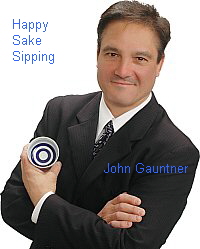 Today’s Japan Times makes mention of JET alum and leading sake expert John Gauntner (a.k.a. The Sake Guy), author of the Sake World E-Newsletter. In the article, which highlights sake’s growing popularity around the world, Gauntner recalls his long journey with the rice-based beverage — from love at first sip to his current status as the first and only non-Japanese certified “sake expert assessor”.
Today’s Japan Times makes mention of JET alum and leading sake expert John Gauntner (a.k.a. The Sake Guy), author of the Sake World E-Newsletter. In the article, which highlights sake’s growing popularity around the world, Gauntner recalls his long journey with the rice-based beverage — from love at first sip to his current status as the first and only non-Japanese certified “sake expert assessor”.
Check out the article, “Foreign sake experts win over hearts, palates”.
Gauntner is a noted lecturer on sake who travels the world speaking on the topic. He has published a score of books on sake and spoke at Japan Society last May. To learn more about him and sake, visit his website www.sake-world.com.
Justin’s Japan: Q&A with Yuki Chikudate of Asobi Seksu
By
JQ magazine’s Justin Tedaldi (CIR Kobe-shi, 2001-02) for Examiner.com. Visit his pages here to subscribe for free alerts on newly published stories.
Formed in New York City in 2001, the band Asobi Seksu and its core members Yuki Chikudate (vocals, keyboards) and James Hanna (guitar) cut their teeth in the indie shoegaze and dream pop scene as it graduated from a dense, textured guitar-based sound to a more abstract, atmospheric approach.
Fluorescence, the band’s fourth and latest studio album, hits stores today (Feb. 15). I caught up with Chikudate prior to the band’s sold out show at New York’s Mercury Lounge later this week for this exclusive interview.
What kind of goals did you and James have recording Fluorescence?
We knew that we were interested in making an album that better captured what we sound like live. We wanted it to be colorful.
How did you approach the recording compared to your other albums?
The approach was to let go and have fun. I think we felt a lot more relaxed this time—it was summer.
Do you have any other special plans for promoting the album in addition to touring?
Hoping to play some festivals this year—outdoor shows are the best!
I read that you grew up in Southern California and attended a school for children of Japanese expatriates who planned to return home after several years abroad. Was this your first brush with Japanese culture outside the home, and how do you think the experience influenced your view of Japan or the way this aspect of its society operates?
I was born in Japan, so no, it wasn’t my first experience with Japanese culture outside my home. My view of Japan was that all my family was there. Sometimes I wished that it wasn’t so far away. As a kid, the strict disciplinary nature of Japanese school sucked!
Click here for the rest of the interview.
Justin’s Japan: Tak Matsumoto of B’z wins first Grammy
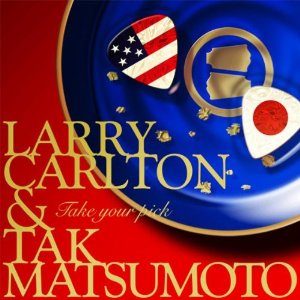
'Take Your Pick' was named Best Pop Instrumental Album last night at the 2011 Grammys. (335 Records/Vermillion Records)
By JQ magazine’s Justin Tedaldi (CIR Kobe-shi, 2001-02) for Examiner.com. Visit his NY Japanese Culture page here to subscribe for free alerts on newly published stories.
While Justin Bieber came up empty, Takahiro Matsumoto of the J-rock band B’z won big at the 53rd annual Grammy Awards in Los Angeles last night (Feb. 13).
The famed 49-year-old guitarist, commonly known Tak Matsumoto, netted his very first Grammy gold (Best Pop Instrumental Album) for Take Your Pick, a collaboration with the equally legendary American guitarist Larry Carlton.
Carlton, whose licks Matsumoto admitted to copying as a teenager, has been recording since the 1960s and has played on over 100 gold and platinum records, including discs by Steely Dan, Michael Jackson and Billy Joel. Take Your Pick, which contains original compositions by the duo supported by American session players, was released last June and goosed by a two-month Japanese tour by the axe slingers.
“I had never told anyone until now, but the Grammys was one of my dreams and a big goal,” Matsumoto said yesterday after winning the award. This was Carlton’s fourth win and 19th nomination overall.
Click here for the rest of the story.
NYTimes column: “Dominating the Man Cave” by JET alum Bruce Feiler
 A thoughtful column in today’s New York Times on the topic of ESPN and man culture by JET alum Bruce Feiler, author of Learning to Bow, Walking the Bible and several other best-sellers including his recent book The Council of Dads:
A thoughtful column in today’s New York Times on the topic of ESPN and man culture by JET alum Bruce Feiler, author of Learning to Bow, Walking the Bible and several other best-sellers including his recent book The Council of Dads:
http://www.nytimes.com/2011/02/06/fashion/06ThisLife.html?_r=1&src=twrhp
Justin’s Japan: Interview with stylist Haruo Noro on NYC’s Lunar New Year Celebration

Haruo Noro brings his unique stylings to NYC's Lunar New Year Celebration Saturday, Feb. 5. (Courtesy of Julia Dubrovich)
By JQ magazine’s Justin Tedaldi (CIR Kobe-shi, 2001-02) for Examiner.com. Visit his NY Japanese Culture page here to subscribe for free alerts on newly published stories.
Haruo Noro came to the U.S. to open his own salon after finding success as a stylist in Japan and London. Last year, he worked with the networking site AsianInNY on their “Lucullen” Lunar New Year Fashion Show for designer Joyce Huang. Today (Feb. 3) marks the beginning of the Lunar New Year, and to ring in the Year of the Rabbit AsianInNY has teamed up with the Greater Chinatown Community Association to present their Lunar New Year Celebration this Saturday in Manhattan. I caught up with Noro, who is again working with his stylists and make-up artists for this distinguished cultural event.
Please tell us about your journey to New York from Japan.
I was born and raised in Aomori, Japan, within a family of stylists. My initial training, cutting technique, discipline and inspiration was born here as well. As my experience grew, so did my thirst for new adventures. I wanted to see the world of fashion and beauty. I wanted to expand my knowledge and creativity.
The salon sponsored me to continue my education in London at the Vidal Sassoon Academy, which is where I first experienced a full variety of hair types and textures. London opened my mind through its culture and fashion, giving me the confidence with my skills and the possibilities in the styling industry.
I have been lucky to have had an offer as an assistant to a top stylist in New York City, Oscar Blandi, through which my learning experience continued. I fully blossomed into a complete stylist during my time there. I continued on to Rita Hazan and then my path became clear. I opened my very own salon, which is in the vision as I have always imagined. Fashion, beauty, diversity and creativity here is endless.
How did you first get involved with AsianInNY? What events have you worked on with them before and what was the reaction from the public?
I first got involved with AsianInNY in 2010. When I heard about this opportunity, I was very excited to be part of the Lucullen Fashion Show at the Lunar New Year Celebration. I was especially enthusiastic about having the support of the Asian community in New York, which I am a part of. The designer loved our work, a sophisticated braided bun, which complimented the garments and added a stylish flair. We have received many positive reviews and are happy to be back this year as a sponsor for AsianInNY’s biggest Lunar New Year Celebration in New York City, this time doing both hair and make-up for two designers, as well as singers participating in the show.
What kind of styling are you doing for the upcoming Lunar New Year Celebration and who are you working with?
We will be styling for two designers Way Zen and Janet Zheng. I will be working with my salon team. Haruo Noro Salon will be doing both hair and make-up. The hair for Way Zan collection will be simple yet romantic, loose updos. The hair for Janet Zheng menswear will be natural yet edgy. The make-up lead artist Wenya Chang describes the look as a beautiful look that simply emphasizes the natural beauty of the woman. Light shimmery brown on the eyes, with a rosy flush on the cheeks and a glossy natural lip color. Most importantly, a sexy, dewy complexion.
How would you describe your own style in determining the perfect cut? Did you find yourself adapting your creativity in order to match the image of the Lunar New Year Celebration?
I am always inspired by the artistry in the designs and intuitively create what I see as a companion piece of art. I strive to create a masterpiece each and every time.
Click here for the complete interview.
There’s a nice piece today by Dan Moeller on The Wide Island View (a really high-quality JET-produced webzine for Hiroshima-ken) looking into the similarities between the Philly Phanatic and Slyly, the Hiroshima Carp’s mascot. In the process, Dan comes to grips with the overlap and digs below the costume to reveal some interesting things about the two mascots:
http://www.wideislandview.com/2011/02/the-hiroshima-carp-and-slyly-their-mascot/
Correction: The Wide Island View is independent and not an official AJET publication, as previously stated. Thanks to Dan for pointing that out and apologies for the confusion.
Justin’s Japan: Interview with Ary Warnaar of Anamanaguchi
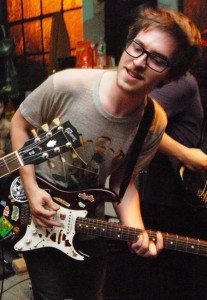
- See Ary Warnarr with Anamanaguchi at New York’s Silent Barn Saturday, Feb. 5. (Leia Jospe/leiajospe.carbonmade.com)
By JQ magazine’s Justin Tedaldi (CIR Kobe-shi, 2001-02) for Examiner.com. Visit his NY Japanese Culture page here to subscribe for free alerts on newly published stories.
The music of Anamanaguchi is part hacked Nintendo Entertainment System, part crowd surfing rave. The Brooklyn-based foursome and chiptune vanguards are on an artistic roll after releasing an acclaimed video game soundtrack based on the film Scott Pilgrim vs. the World, and earlier this month the band played packed houses at both The Studio at Webster Hall as a headliner and Irving Plaza with Super Mash Bros.
If you missed them, fear not: Anamanaguchi returns this Saturday at Silent Barn. I caught up with their co-guitarist and songwriter Ary Warnaar for this exclusive interview.
How did Anamanaguchi form, and what made you decide to specialize in playing chiptune music?
Pete [Berkman, the band’s lead songwriter] started writing chip music in 2003 and was releasing it online under the name Anamanaguchi. Once there was a demand for the music in a live setting, Pete decided to form a band. Over the years the lineup changed quite a bit, but solidified in 2007-08 with Pete on guitar, James [DeVito] on bass, Luke [Silas] on drums and me on guitar as well. I started messing around with chip music when I met Pete and James at New York University in the music technology program. I had been writing electronic music for most of my teen years and had become quite bored with most software by the time I entered college. Modern music software gives you unlimited options in terms of creation, and often lets you skip most steps of creation with presets and loops…software for limited sound chips (such as the 2A03 in the Nintendo Entertainment System) does the exact opposite. You’re extremely limited and are forced to make every note and every sound count. I found that the primitive software and extreme limitations actually made me write more complex music, and helped me focus on expressing myself. The harsh sound palette of simple squarewaves and white noise was also a breath of fresh air to me…overproduced lush sounding electronic music drenched in reverb and pads with hundreds of channels can get kinda boring. Chiptune music is a nice way of going back to basics.
What does the band’s name mean?
Before studying music technology, we were all fashion majors at the Parsons School of Design. Pete and James both interned for Armani, I was a secretary at Prada, and Luke worked at the Gucci store in SoHo. Whenever we showed up at fashion parties, people would always call us as the “Armani-Prada-Gucci” boys. After a couple bottles of Veuve Clicquot, people just started slurring the nickname into “Anamanaguchi.” We quickly realized the fashion world wasn’t for us, but that name just stuck when we made the shift to being a band.
Tell us about your history with Japan. How did it pop up on your radar, what made you want to go there, and how do you keep up your connection with it back home?
Hmm…I’m sure we all have different answers for this. I’ll start with answering for the band, and then get more personal:
As a band, we have never been to Japan.
As a band, we are DYING to go to Japan.
Touring in Japan is kinda our number one dream. Japanese culture, and more specifically, its music scene, is totally awesome. Even the chip-scene in Japan is amazing with artists like quarta330, USK, Maru, Aonami, Cow’P, BSK, YMCK, etc., etc…..
Personally, I have been to Japan twice. I went to Tokyo a couple summers ago and loved it so much that a week after I got back home, I bought another ticket right back to Japan to go to the Fuji Rock Festival. BEST TIME EVER. I’m always keeping up with what’s coming out of Japan, whether it’s reading blogs online searching for new Japanese artists, or asking my girlfriend to buy me clothes when she goes back to Tokyo to visit her family.
What’s your fanbase in Japan like? What things would you like to see and do there on tour?
I don’t really know what our fanbase is like in Japan…I know we have fans there, but we have yet to meet any of them! Hopefully we’ll be out there sooner than later. I love Tokyo, but haven’t really gotten a chance to see any other cities in Japan. Touring would be an awesome excuse to see all of Japan.
Click here for the complete interview.
Justin’s Japan: X Japan Signs North American Deal with EMI
By JQ magazine’s Justin Tedaldi (CIR Kobe-shi, 2001-02) for Examiner.com. Visit his NY Japanese Culture page here to subscribe for free alerts on newly published stories.
Hot on the heels of a rapturous North American tour last fall that climaxed with a sold out gig at New York’s Roseland Ballroom, X Japan is one step closer to cracking America.
The supergroup, which began recording in the mid-’80s and went on to become one of the most successful in Japanese history, has inked an exclusive three-year North American manufacturing and distribution agreement with EMI Music. The first release will be the track “Jade” on March 15, followed by the band¹s as yet untitled American debut set for a summer 2011 release.
“We are so honored to have X Japan as part of the EMI Label Services/Caroline family,” commented EMI Label Services executive VP Mike Harris in a press release issued Thursday. “After the highly successful North American tour last fall, the timing is perfect for the upcoming X Japan release.”
Led by the charismatic drummer/pianist Yoshiki (whom this reporter conducted an exclusive interview with in October), X Japan is currently putting the finishing touches on the disc, the band¹s first new studio album since 1996 and fifth overall. Half of the songs will be culled from some of the band’s gold and platinum Japanese singles, while the other half are brand new songs. An estimated 95% of the lyrics are being sung in English by vocalist Toshi.
Click here for the rest of the story.
Justin’s Japan: NY’s Japan Society Fires Up Sabu Film Retrospective
By JQ magazine’s Justin Tedaldi (CIR Kobe-shi, 2001-02) for Examiner.com. Visit his NY Japanese Culture page here to subscribe for free alerts on newly published stories.
This week, New York’s Japan Society presents Run, Salaryman, Run! A Retrospective of Sabu’s Film Works, six slices of cinema packed with high speed, high style, hard luck, and the quirky lusts and lunacies of post-Bubble Japan.
Born Hiroyuki Tanaka in 1964, Sabu is the cult auteur of “punk n’ roll,” alternative comedies, often imitated, never equaled, and far too rarely shown in the U.S. since his 1996 feature debut, Non-Stop a.k.a DANGAN Runner (a film praised by The A.V. Onion Club as “effortlessly clever” and included in this line-up).
In a world of hazards and happenstance, Sabu zeroes in on blue and white collar everymen tossed into dangerously absurd situations from which they desperately try to run. As things speed along, Sabu brings a fresh and frantic twist to traditional film genres (the yakuza film, the thriller, etc.), giving their lean and clean-cropped premises the electroshock treatment and über edgy music scores.
The salute kicks off Wednesday, Jan. 26 with Monster, winner of the FIPRESCI Prize at the 2000 Berlin Film Festival “for its austere, dark wit and keen eye for human foibles.” Other highlights include The Blessing Bell (Netpac Award, 2003 Berlin International Film Festival, Grand Jury Prize, 2003 Cinemanila International Film Festival), and the international premiere of the Japanese auteur’s latest work, the HD-lensed Troubleman.
Sabu has drawn comparisons with Buster Keaton, Johnnie To and Doug Liman, but his satirical jamborees, more than just friendly black comedies, are truly unlike anything else on the silver screen: they are stamina tests, survival riffs, victory rolls.
Click here for the complete story.
Justin’s Japan: Nintendo 3DS Comes to America March 27
By JQ magazine’s Justin Tedaldi (CIR Kobe-shi, 2001-02) for Examiner.com. Visit his NY Japanese Culture page here to subscribe for free alerts on newly published stories.
Nintendo announced at a press event today (Jan. 19) that its newest handheld video game console, the Nintendo 3DS, will be available in North America on March 27 for $249.99, hitting stores less than a month after its Japanese debut.
The 3DS is the latest incarnation of Nintendo’s portable DS series, which have sold more than 135 million units worldwide since 2004, making it second to Sony’s PlayStation 2 in total sales. Nintendo’s hook this time that should push them over the top employs a method called autostereoscopy, which provides gaming on a special screen without the need for 3D glasses.
Other features include special augmented reality games, backward compatibility with other DS titles, a Virtual Console service for users to purchase Game Boy and Game Boy Color favorites, 3D movie support, StreetPass and SpotPass mode for wireless and Internet gaming, and a Mii Maker that creates a Mii avatar based off a photo taken with the 3DS’ built-in camera. Other interactive functions, like a pedometer and a 3D camera on the back of the device, are expected to increase the console’s appeal to non-gamers as well, according to Nintendo of America’s president Reggie Fils-Aime.
Click here for the complete story.
Justin’s Japan: Anime Smash ‘Evangelion 2.0’ Invades North America
By JQ magazine’s Justin Tedaldi (CIR Kobe-shi, 2001-02) for Examiner.com. Visit his NY Japanese Culture page here to subscribe for free alerts on newly published stories.
This Friday (Jan. 21), Cinema Asia Releasing, Eleven Arts and FUNimation Entertainment are set to launch the second installment of the Evangelion film series, as Evangelion 2.0: You Can (Not) Advance premieres in New York and nearly 80 other locations in North America.
Presented in English, 2.0 is the second film in a four part series that re-imagines the sci-fi animated blockbuster TV series Neon Genesis Evangelion (1995-1996). Written and directed by series mastermind Hideaki Anno, the film was one of the top five highest grossing Japanese films of 2009 with box office in excess of $40 million. The franchise itself has grossed over a billion dollars to date, and has become a staple of cosplayers worldwide.
Prior to this week’s debut, the film—which blends apocalyptic mecha action and adolescent angst with thought-provoking religious iconography—bowed at festivals around the world including France, Germany, Finland and Australia. The preceding installment, Evangelion 1.0: You Are (Not) Alone (2007), will also screen in New York for two nights starting today (Jan. 19).
Click here for the complete story.
Any JETs or JET alums with Georgia connections in Japan?
Via JET alum Jessica Cork who works at the Consulate General of Japan in Atlanta:
Trevor Williams, the editor of Global Atlanta, will be visiting Japan at the end of this month and would like to interview some young professionals or entrepreneurs in Japan, preferably those who have Georgia connections. If you are interested, please contact him directly:
Trevor Williams
Editor, www.globalatlanta.com
twilliams@globalatlanta.com
Office: (404) 377-7710
Mobile: (706) 615-4599

